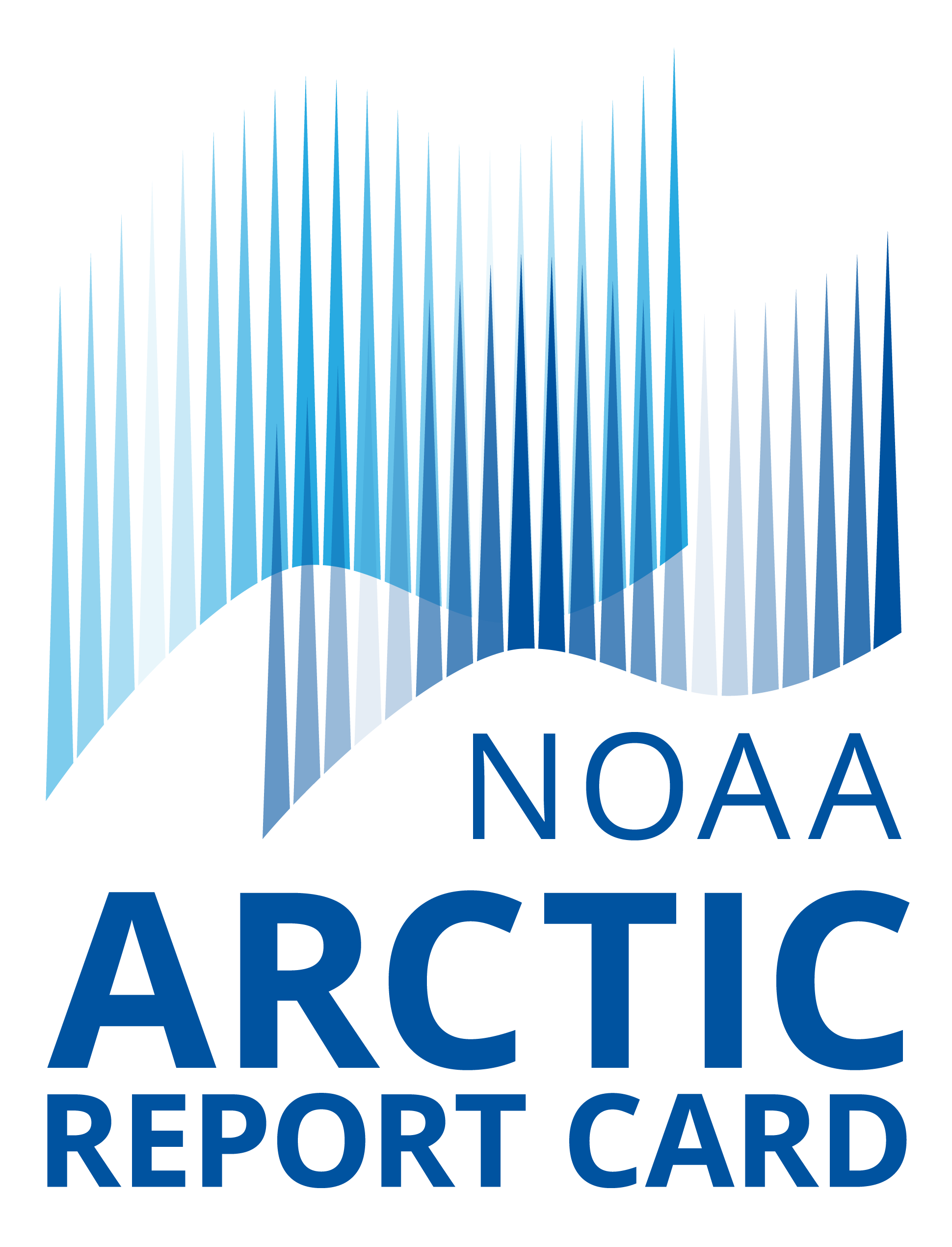The Arctic Report Card (hereafter ‘ARC’) has been issued annually since 2006. It is a timely and peer-reviewed source for clear, reliable, and concise environmental information on the current state of different components of the Arctic system relative to historical records. The ARC is intended for a wide audience interested in the Arctic environment and science, including scientists, teachers, students, decision-makers, policymakers, and the general public.
ARC2024 contains 12 essay contributions prepared by an international team of 97 scientists from 11 countries. An independent peer review of ARC2024 was organized by the Arctic Monitoring and Assessment Programme (AMAP) Secretariat. The ARC is classified as a NOAA Technical Report and is archived within the NOAA Library Institutional Repository.
ARC2024 is organized into three sections: Vital Signs, Other Indicators, and Frostbites. The Vital Signs section is for annual updates on eight recurring topics: Surface Air Temperature; Precipitation; Terrestrial Snow Cover; Greenland Ice Sheet; Sea Ice; Sea Surface Temperature; Arctic Ocean Primary Productivity; and Tundra Greenness. The Other Indicators section is for topics updated every 2-4 years, many of which have appeared in previous ARCs. The Frostbites section is for reports on new and newsworthy items, addressing emerging issues and topics that relate to long-term observations in the Arctic. In addition, each year, the Executive Summary offers a high-level synthesis of the content within the Arctic Report Card.
People occasionally ask questions such as “How are essay topics selected?” or “Why is topic X not in the Arctic Report Card?” The short answer is that each ARC strives to include some recurrent and new topics and thus covers many subjects over a period of years. In this way, the ARC achieves a comprehensiveness over time that is not possible in any single year. A complete list of topics covered since the first publication of the ARC is available at the Report Card Archive. Click on these hyperlinks for a list of all ARC2024 authors and their affiliations, a list of references from all 12 essays, and the Executive Summary. If you are interested in submitting a topic for consideration for future reports, please share your idea via this Google form.
Acknowledgments
Financial support for Arctic Report Card 2024 was provided by NOAA’s Global Ocean Monitoring and Observing (GOMO), Arctic Research Program, including content editing funded through the Cooperative Institute for Earth System Research and Data Science (CIESRDS) via NOAA Cooperative Agreement NA22OAR4320151 (Druckenmiller and Moon) and by the Cooperative Institute for Climate, Ocean, and Ecosystem Studies (CICOES) under NOAA Cooperative Agreement NA20OAR4320271 (Thoman). The editors thank the Arctic Monitoring and Assessment Programme (AMAP) Secretariat for organizing the independent peer review and all the reviewers. The editors also recognize the contribution of coordinating editor Cynthia Garcia from NOAA’s GOMO, Arctic Research Program, who coordinated and managed the various elements of the ARC’s production process, and the entire ARC production team for the professionalism, dedication, and enthusiasm in producing each year’s Report.
How to cite Arctic Report Card 2024
Citing the complete report or Executive Summary:
Moon, T. A., M. L. Druckenmiller, and R. L. Thoman, Eds., 2024: Arctic Report Card 2024, https://doi.org/10.25923/b7c7-6431.
Citing an essay (example):
Mudryk, L. R., A. Elias Chereque, C. Derksen, K. Luojus, and B. Decharme, 2024: Terrestrial snow cover. Arctic Report Card 2024, T. A. Moon, M. L. Druckenmiller, and R. L. Thoman, Eds., https://doi.org/10.25923/4bb3-3f87.
(Note: Each essay has a unique DOI assigned to it)
Media Contact Information
Monica Allen
NOAA Communications
monica.allen@noaa.gov
(202) 379-6693
Theo Stein
NOAA Communications
theo.stein@noaa.gov
(303) 819-7409
Banner Photograph
Ribbon seal in the Chukchi Sea. Photo by Justin Crawford, ADF&G. Photo was taken under NMFS ESA/MMPA research permit #15324 issued to ADF&G, as it is required by the ESA and MMPA to approach marine mammals legally.
Mention of a commercial company or product does not constitute an endorsement by NOAA/OAR. Use of information from this publication concerning proprietary products or the tests of such products for publicity or advertising purposes is not authorized. Any opinions, findings, and conclusions or recommendations expressed in this material are those of the authors and do not necessarily reflect the views of the National Oceanic and Atmospheric Administration.
November 27, 2024
